
A crude oil lake. Most oil well fires had one surrounding it. Average depth - 3 feet.

The whole idea was to keep dumping sand closer and closer to the fire.

Using water to fight an oil well fire? Yes, to cool down the well head.

This resulted in scalding hot steam......very dangerous to the firefighters.

Instant asphalt (no joke). As the burning crude oil mixed with the desert sand.

Guiding a bomb (lower left corner) as close to the well-head as possible.

Using explosives to blow out a fire? Yes, to deprive it of oxygen for a few seconds.
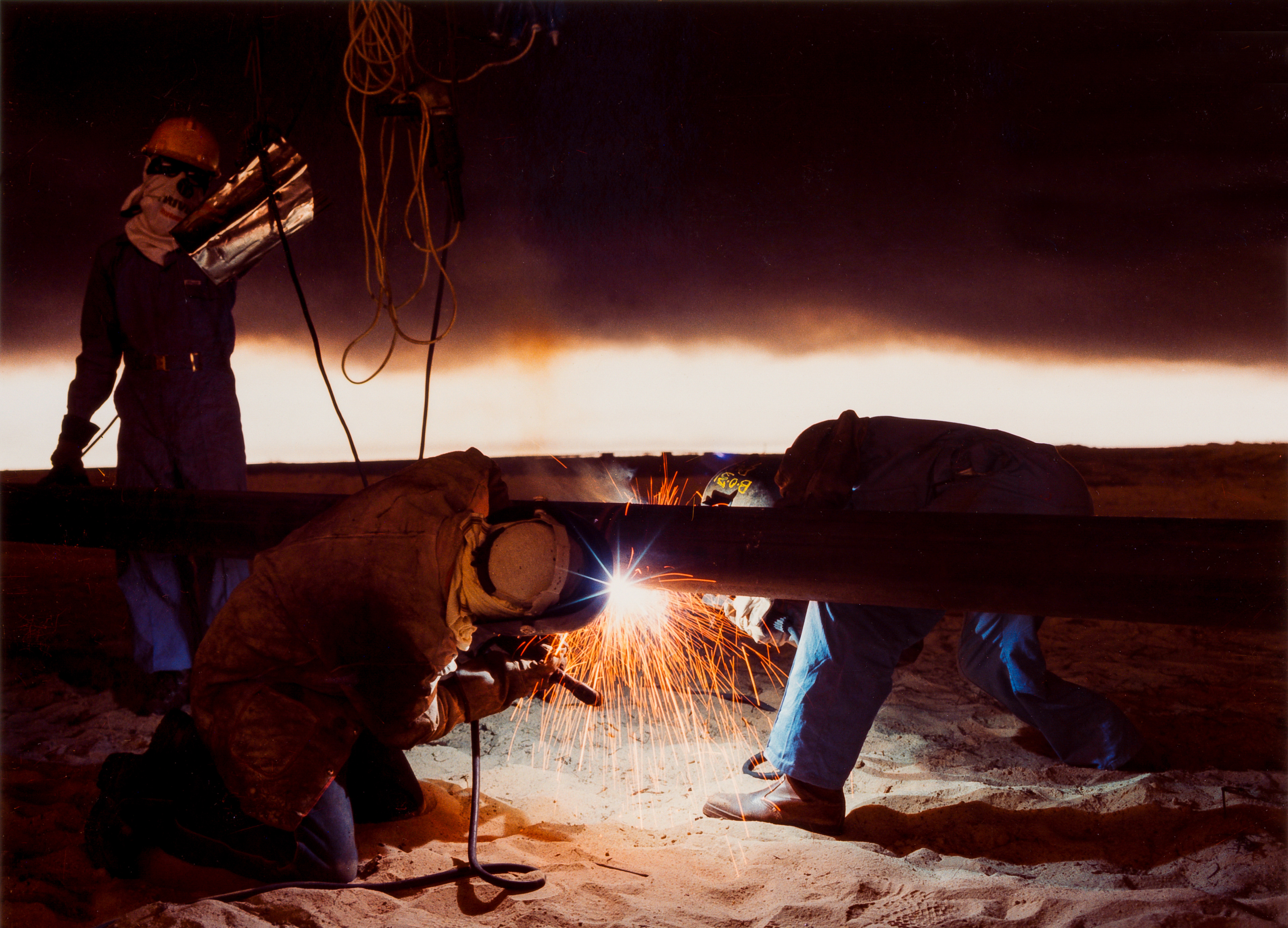
That's an oil cloud in the background. The time is around noon.
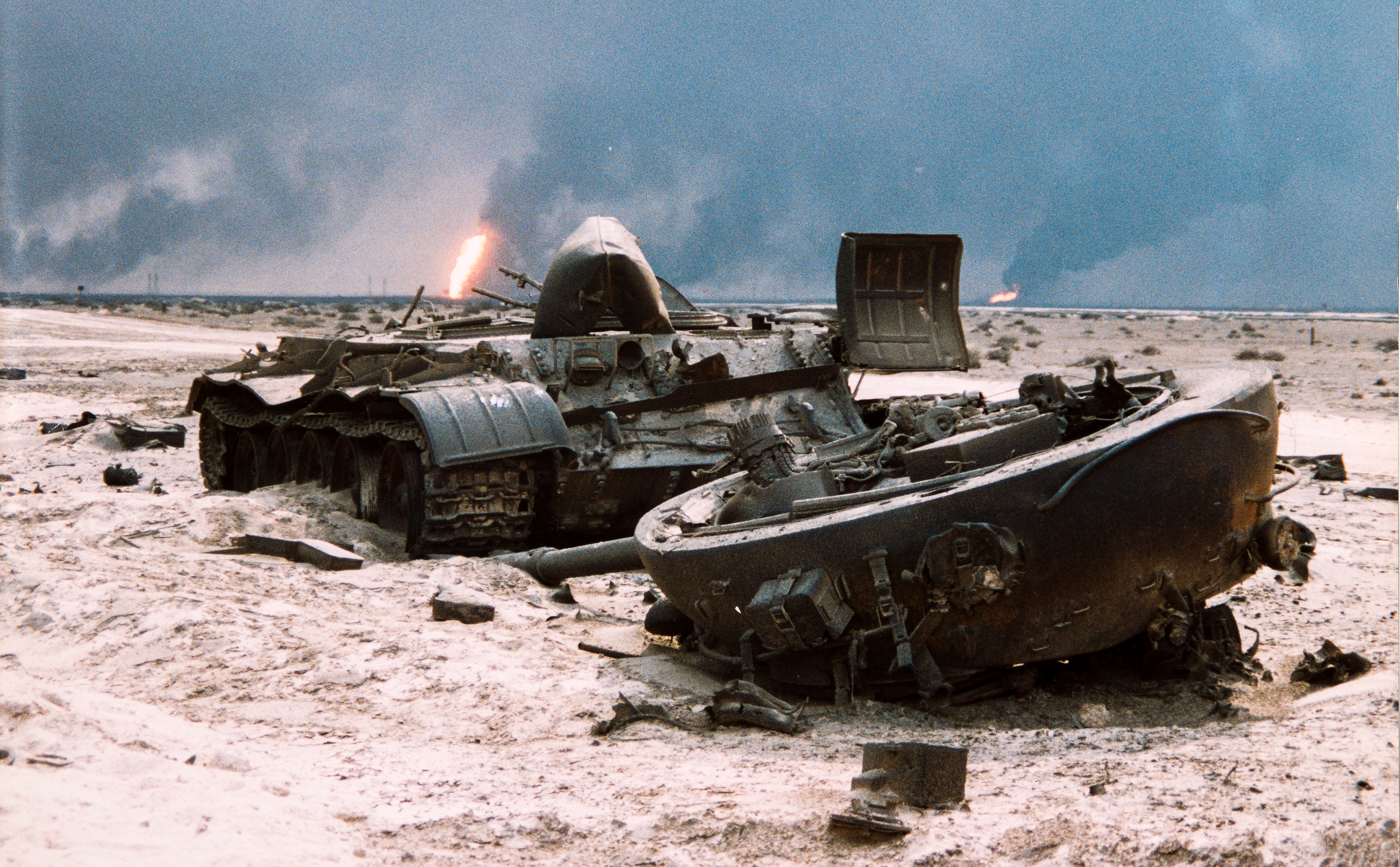
Iraqi (Russian) T-72 tank hit by an American Apache Helicopter Hellfire missile.
Gulf War I - 1991. As his invading / occupying Iraqi troops were being driven out of Kuwait by United Nations forces, dictator Saddam Hussein decided on a final act of revenge. He ordered his retreating military to set ablaze every oil well they possibly could. In one of the cruelest jokes ever played on Mother Nature, the Iraqis set on fire 732 out of 931 working oil wells. All were burning simultaneously.
Shortly after the war was over, I was there - not as a soldier - but as a teacher at the American School of Kuwait. On frequent weekends, along with other teachers, I would go out to the desert and watch these highly specialized and phenomenal firefighting teams from 27 countries take down these oil well fires. Some of them were 300 feet high, but most were 80 to 100 feet. More than the intense heat and the accompanying pollution from these fires, I shall never forget the incredibly loud sound that a gushing oil well fire makes. Who knew?
In the beginning - and because no one really knew how to tackle such a gargantuan task - it took 7 to 10 days just to put out one fire. As such, it was speculated that it might take 10 years to extinguish them all. Then, the more these teams fought the oil well fires, the more they learned how to fight them. It sounds counter-intuitive, but incredibly, the primary way the flames were doused was to blow them out with explosives. The whole idea was to deprive the fire of oxygen for a precious few seconds. Most often, plain ole dynamite or C-4 were used with the end result being the black crude gushing out of the ground unaccompanied by fire. Talk about the lesser of two evils.
Toward the end of the ten months that it took to put them out, these oil well fires were being extinguished at a rate of several per day. The last one was put out on November 06, 1991. I remember it well. The Emir of Kuwait (like a mini-king) declared it a National Holiday and we had the day off from school!
Given that this terrible thing took place, "luckily" for me, I had my Hasselblad 500 (medium format) film camera in hand most of the time. The mechanical leaf shutter only went up to 1/500th of a second, and the photo negatives were square. Moreover, film for these uncommon medium format cameras was in short supply. If only the science of today's photography had existed back then. To pour salt into it, I do not own the copyright(s) to these photos. From the "Department of Decisions I Have (Very Much) Regretted," for a sum of $1500, I impetuously and foolishly sold these photos/negatives (as well as any rights) to one of the two construction companies overseeing the dousing of these oil well fires. Yikes! I don't think they ever did anything with the photos, except (I'm guessing) they might have them on display in their corporate offices? Hope so and I hope they have given me credit over the years.

Mia Culpa - I literally ripped-off this decal from the door of a Boots & Coots truck.

Myself and another hometown teacher were mini-celebs for a day. FYI - I purposely put my business card over a lousy headline.
With the above points having been made, what you see (below) are photos that were taken with ordinary (point and shoot) cameras by myself and teacher friends of mine. Just so you'll know, I am not trying to portray them here, as being "website worthy" photographs, but I figured they should be included here because of what they document. Therefore, I offer them in this context. Sorry to appear in so many photos because that's definitely not my style. But this event, as well as these photographs, was / are truly historical.

Going out to the desert for a "lovely" Sunday afternoon drive.

This is the sun - not the moon.

Imagine? There are firefighters in the middle of that fire.

Burned out Iraqi (Russian-made) truck.

That's a "baby oil well fire" behind me - only about 50 feet high.

Iraqi (Russian) T72 tank hit by an Apache Helicopter Hellfire missile.

Iraqi (Russian-made) artillery battery.

At least these guns of war were finally silenced.
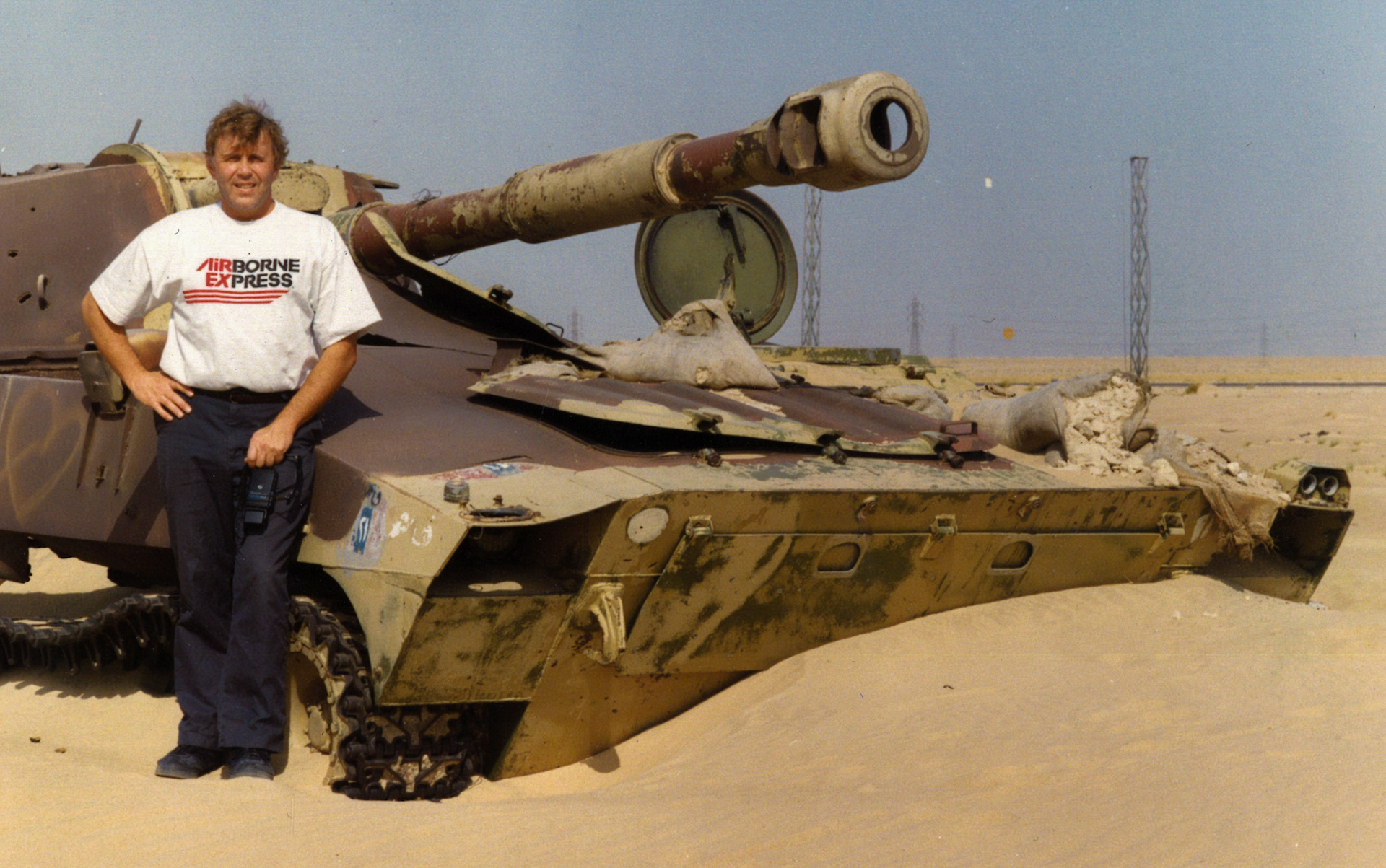
Don't mind the non-military T-shirt. AirEx used to be an overnight courier.
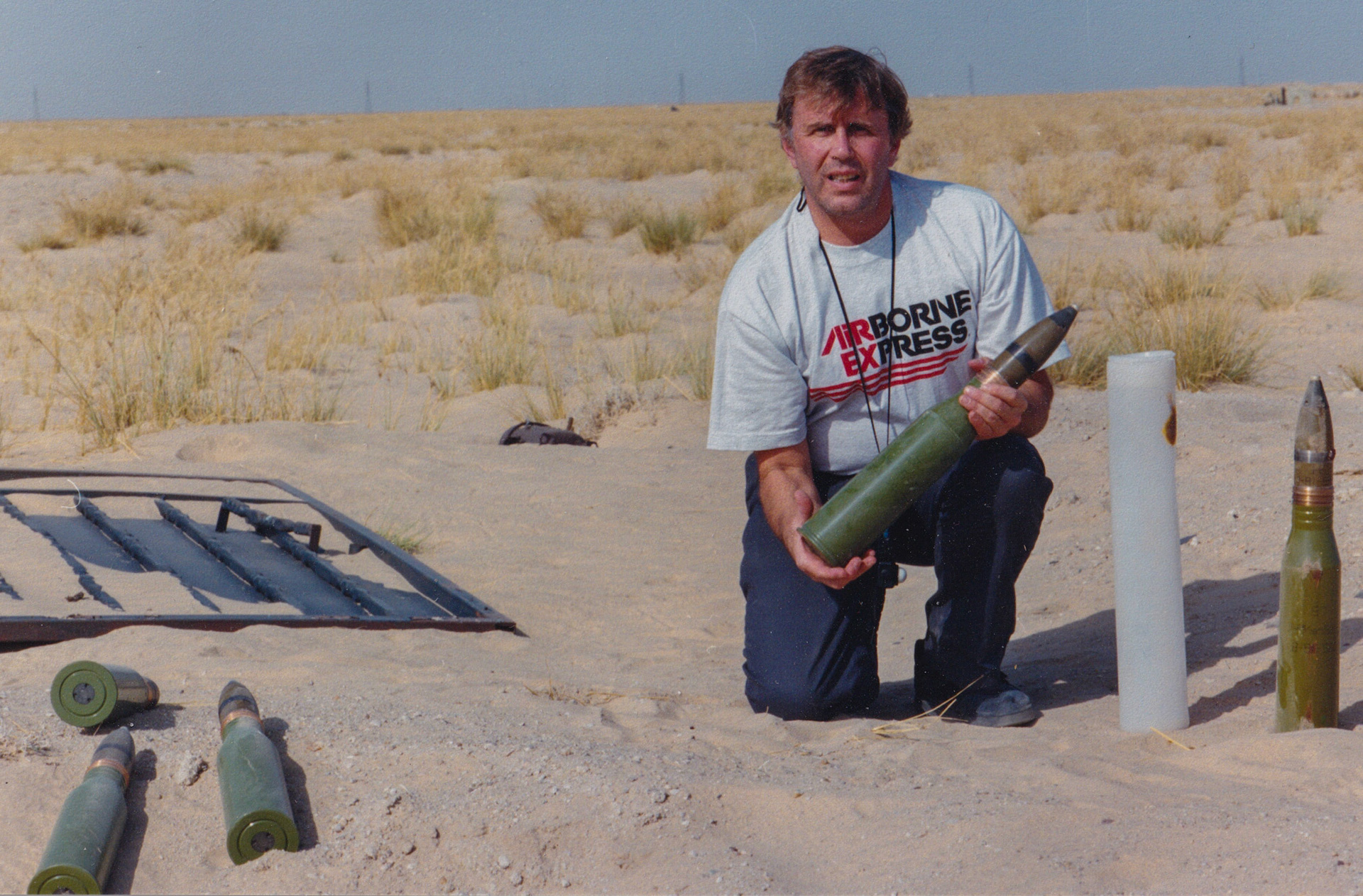
Fully loaded artillery shells. Back to the T-shirt, I worked for AirEx before the war.

Getting ready to fly up to the Kuwaiti / Iraqi border (DMZ) with our...

...United Nations Chilean Air Force helicopter pilots.
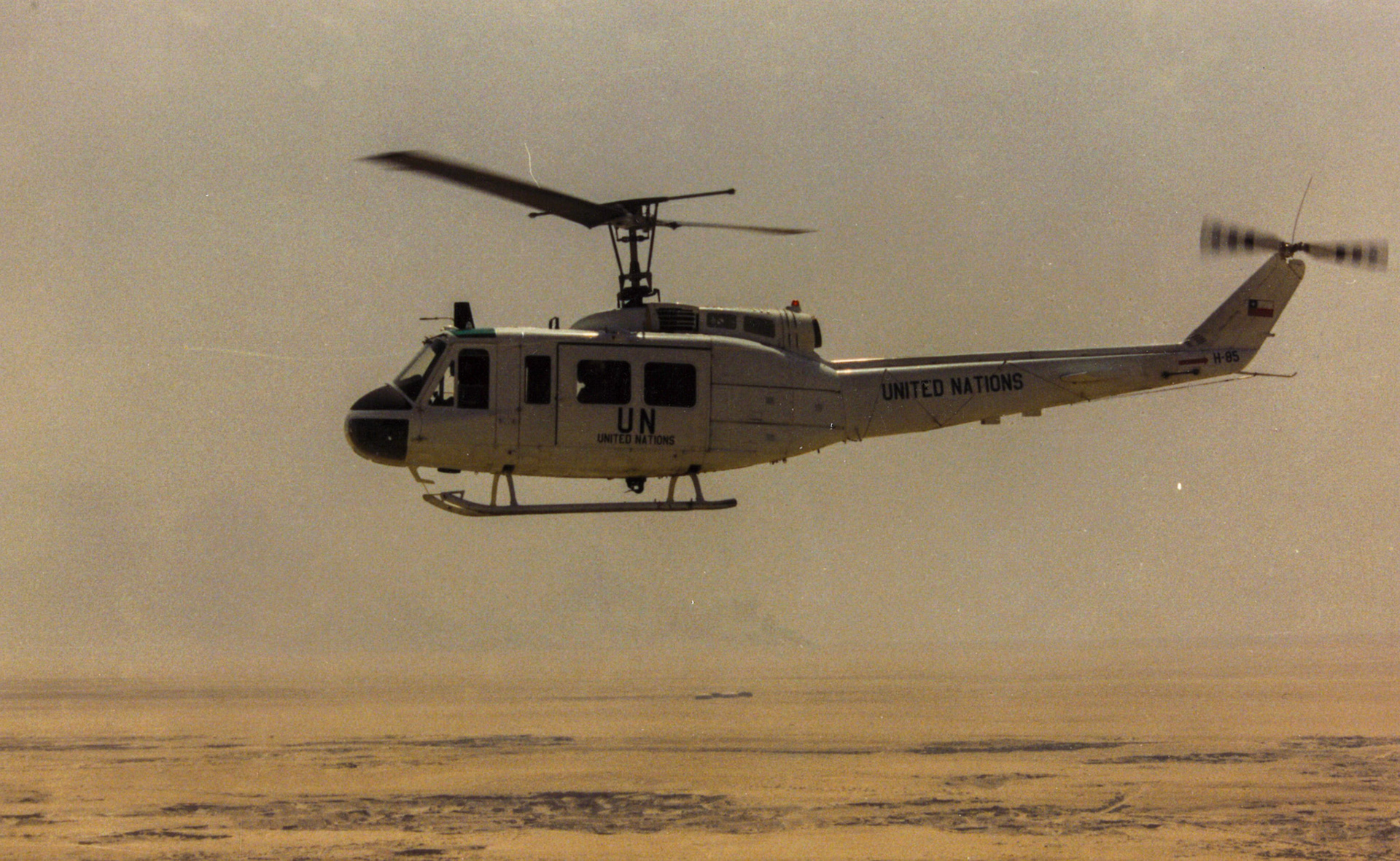
Teacher friend Nell and me flying in twin choppers side-by-side
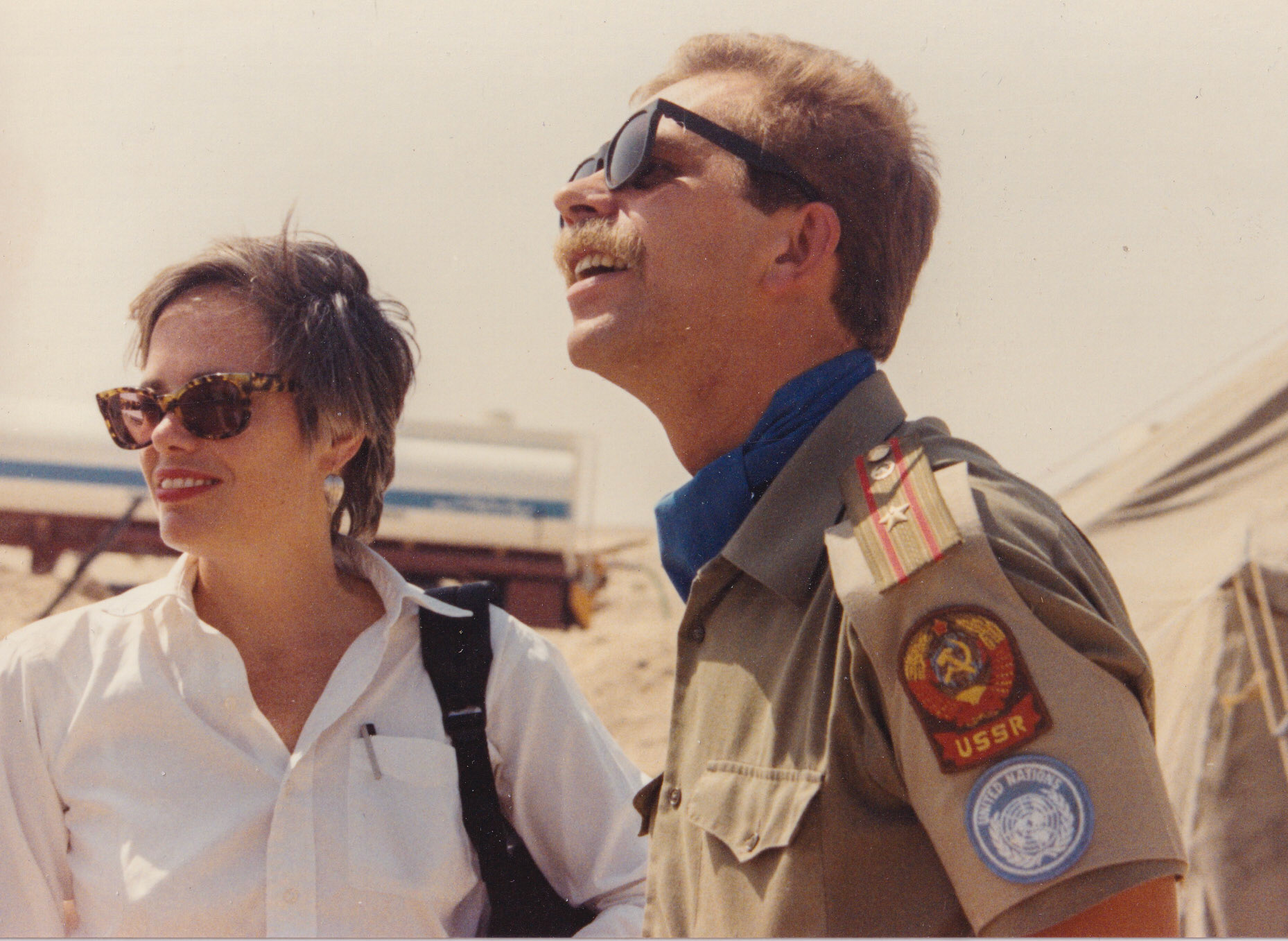
Nell schmoozing with the Russian soldier. Notice that USSR patch ? !
![At the DMZ with UN soldiers - USSR - France [me] - Venezuela](https://cdn.myportfolio.com/66f6945d-d8eb-4c9e-a6f4-294ff1558760/b53548fa-2974-4230-8a55-7cecf8c68f80_rw_1920.jpg?h=c46004ca1d55003b73638e80b01e906e)